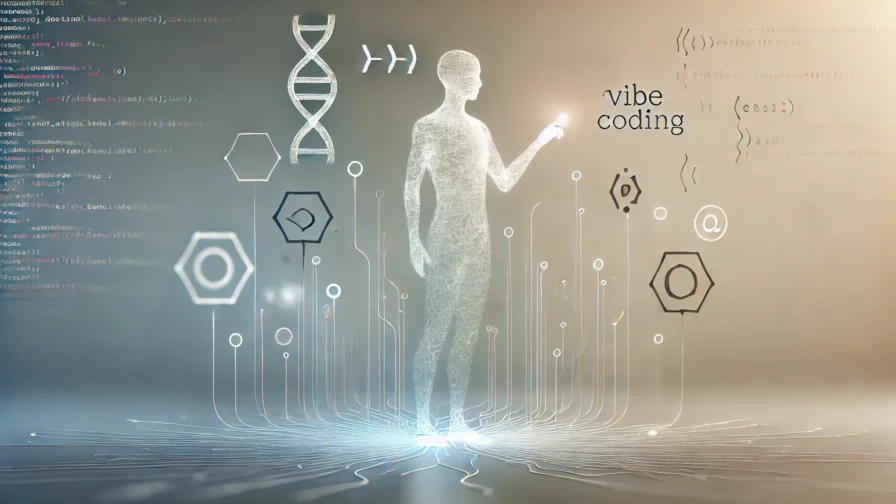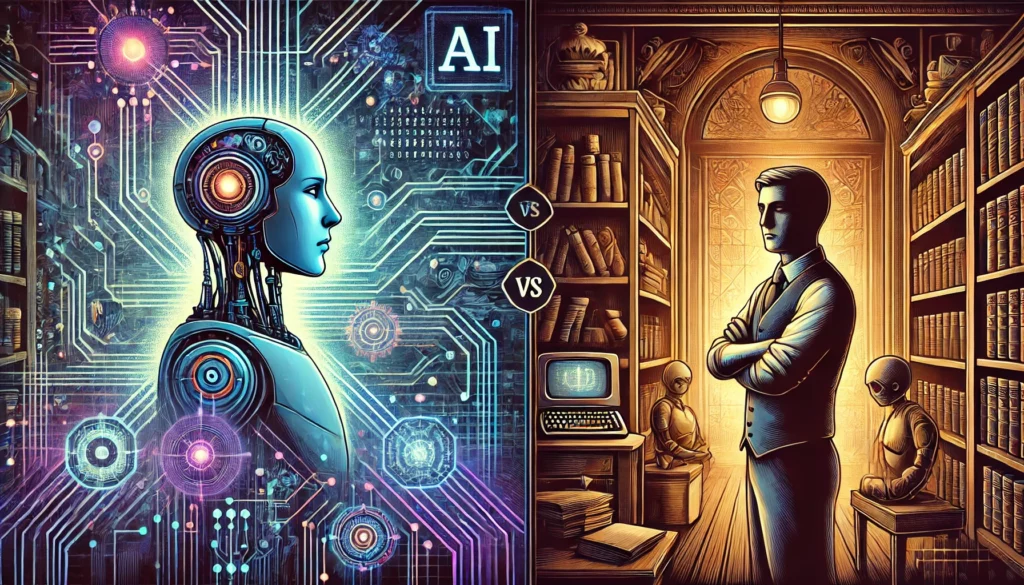
In early February 2025, Andrej Karpathy coined the term “vibe coding” in a tweet that quickly captured the tech world’s imagination. Within weeks, this concept spread from social media to mainstream publications like the New York Times, Ars Technica, and the Guardian. But as with many rapidly popularized terms, there’s growing concern that “vibe coding” is being misapplied and misunderstood.
What Is Vibe Coding, Exactly?
According to Karpathy’s original definition, vibe coding is a specific approach where you “fully give in to the vibes, embrace exponentials, and forget that the code even exists.” It’s not simply any programming assisted by AI but rather a distinct methodology where you delegate code comprehension entirely to LLMs, accept AI-generated code without reviewing diffs, troubleshoot by copying error messages directly to the AI, and work around bugs that the AI can’t fix by asking for alternative approaches. The code grows beyond your personal understanding.
As Karpathy put it: “I’m building a project or webapp, but it’s not really coding—I just see stuff, say stuff, run stuff, and copy paste stuff, and it mostly works.”
There's a new kind of coding I call "vibe coding", where you fully give in to the vibes, embrace exponentials, and forget that the code even exists. It's possible because the LLMs (e.g. Cursor Composer w Sonnet) are getting too good. Also I just talk to Composer with SuperWhisper…
— Andrej Karpathy (@karpathy) February 2, 2025
Vibe Coding vs. Responsible AI-Assisted Programming
A critical distinction exists between vibe coding and other forms of AI-assisted development. Professional software engineers using LLMs as tools typically review all AI-generated code thoroughly, ensure they can explain the code’s functionality to others, test code rigorously before deployment, consider factors like performance, security, and maintainability, and make informed trade-offs based on requirements.
The article explicitly states that if you’re reviewing, testing, and fully understanding the code an LLM writes for you, “that’s not vibe coding, it’s software development.”
The Technical Mechanics Behind Vibe Coding
Vibe coding typically employs tools like modern LLMs such as Claude 3.7 Sonnet or GPT-4, code-specific interfaces like Cursor Composer, voice transcription tools like SuperWhisper to minimize keyboard use, and sandboxing environments that limit potential damage from untested code.
The workflow differs significantly from traditional programming. Developers describe what they want in conversational terms, the LLM produces functioning code without intermediate steps, when something breaks, the error message becomes the next prompt, and code grows organically without systematic reorganization.
When Is Vibe Coding Appropriate?
The article provides several technical criteria for determining when vibe coding might be appropriate. It’s suitable for low-stakes projects like personal tools, prototypes, and experiments; situations with limited security concerns where projects don’t handle sensitive data or authentication; scenarios without financial exposure where code doesn’t interact with paid APIs without billing limits; contexts with limited network interactions, preferably in sandboxed environments that prevent network requests; and for personal use where projects aren’t intended for wider distribution.

Technical Challenges and Future Directions
Several technical hurdles remain for safe and effective vibe coding. Current sandboxes like Claude Artifacts restrict functionality in exchange for safety. Bugs in AI-generated code can cascade through complex systems. Not all frameworks and libraries work well with AI-generated code. Unoptimized AI-generated solutions may introduce inefficiencies. Traditional version control practices break down when code isn’t understood.
The article suggests that better tooling could emerge to address these issues, potentially creating safer “guardrails” while preserving the productivity benefits.
The Educational Value of Vibe Coding
From a technical perspective, vibe coding offers significant educational benefits. It lowers the initial barrier to entry for programming, allows experienced developers to explore the capabilities and limitations of LLMs rapidly, enables experimentation with unfamiliar libraries or frameworks, and provides immediate feedback on natural language programming instructions.
The Developer Resistance: A Growing Backlash
Despite the enthusiasm surrounding vibe coding, a significant portion of the developer community has expressed deep reservations about this approach. Their concerns stem from fundamental principles of software engineering that seem at odds with vibe coding’s core philosophy.
Professional developers often view code comprehension as non-negotiable. The ability to understand every aspect of a codebase isn’t just professional pride—it’s a prerequisite for maintaining, debugging, and evolving software over time. Vibe coding’s explicit rejection of this principle strikes many as dangerously cavalier. As one prominent developer put it in a recent blog post, “Embracing code you don’t understand is like driving a car with your eyes closed—it works until it catastrophically doesn’t.”
Security experts have been particularly vocal about the risks. When developers accept code without a thorough review, vulnerabilities can slip through undetected. These might range from simple inefficiencies to serious security flaws that expose user data or create entry points for malicious actors. The rapid pace of vibe coding compounds this risk—with code being generated, accepted, and built upon so quickly, the surface area for potential vulnerabilities expands exponentially.
Drawbacks and Limitations
Beyond the ideological resistance, vibe coding faces practical limitations that constrain its utility. The approach works well for simple applications with straightforward requirements, but struggles with complex systems where edge cases, performance optimization, and integration with existing codebases become critical concerns.
Error debugging becomes particularly challenging when the developer lacks a clear mental model of how the code functions. While simple errors can be resolved by feeding error messages back to the LLM, more complex issues—particularly those involving subtle logic flaws or performance bottlenecks—often require deeper analysis than the vibe coding approach permits.
Collaboration presents another obstacle. Software development is increasingly a team effort, and code must be legible to other developers who may need to maintain or extend it. Code generated through vibe coding often lacks the documentation, consistent style, and organizational clarity that facilitates collaborative work.
Perhaps most significantly, vibe coding creates a dependency relationship that some developers find troubling. As practitioners rely more heavily on LLMs to generate code they don’t fully understand, their ability to work independently may atrophy. This dependency becomes problematic when LLMs struggle with novel problems or when network outages or API changes disrupt access to these tools.
Conclusion
Vibe coding represents a fascinating new approach to software development that deliberately sacrifices comprehensive understanding for speed and accessibility. While not appropriate for mission-critical or production systems, it opens programming to newcomers and provides experienced developers with rapid prototyping capabilities.
The term shouldn’t be diluted to encompass all AI-assisted programming, nor should it be dismissed as universally irresponsible. Instead, it represents a specific niche in the programming ecosystem—one that’s likely to grow as LLM capabilities continue to advance and new tools emerge to ensure safety and reliability in this novel paradigm.
The resistance from traditional developers isn’t merely resistance to change—it reflects legitimate concerns about quality, security, and sustainability. As vibe coding evolves, finding the balance between innovation and responsible engineering practice will be crucial. The most productive path forward may involve establishing clearer boundaries around when vibe coding is appropriate, while developing better tools to mitigate its inherent risks.




